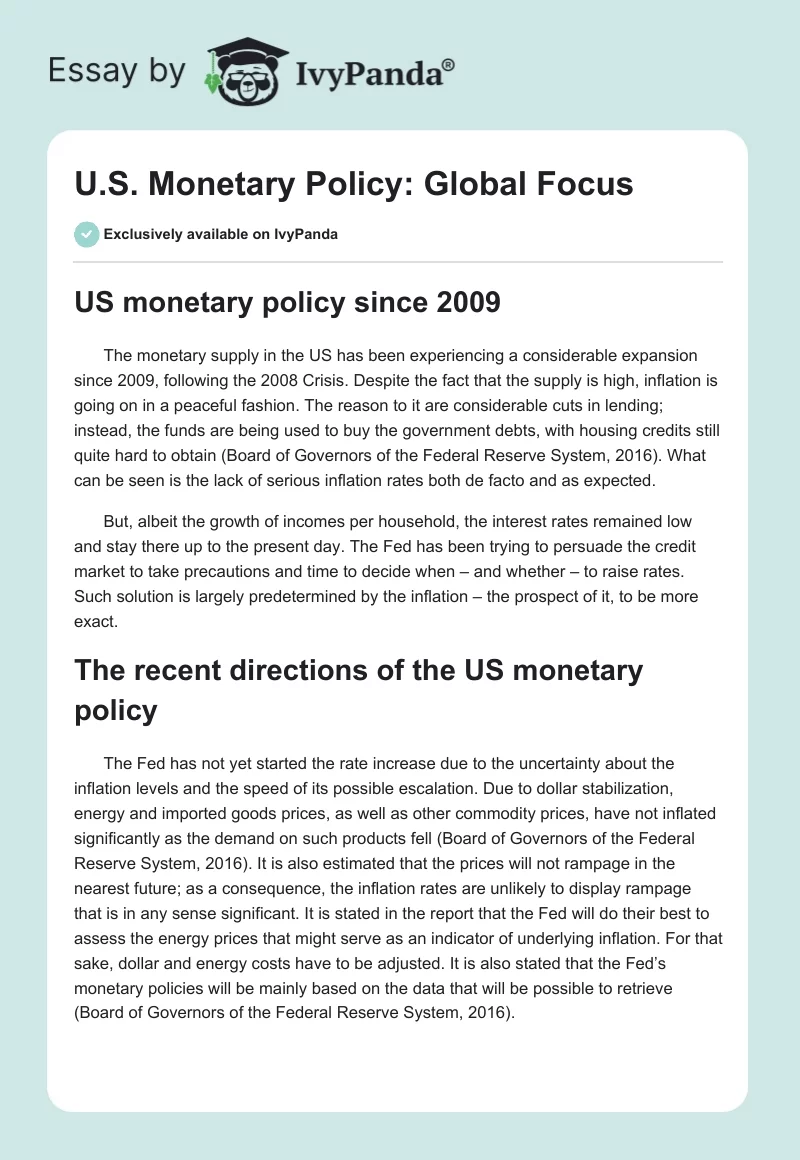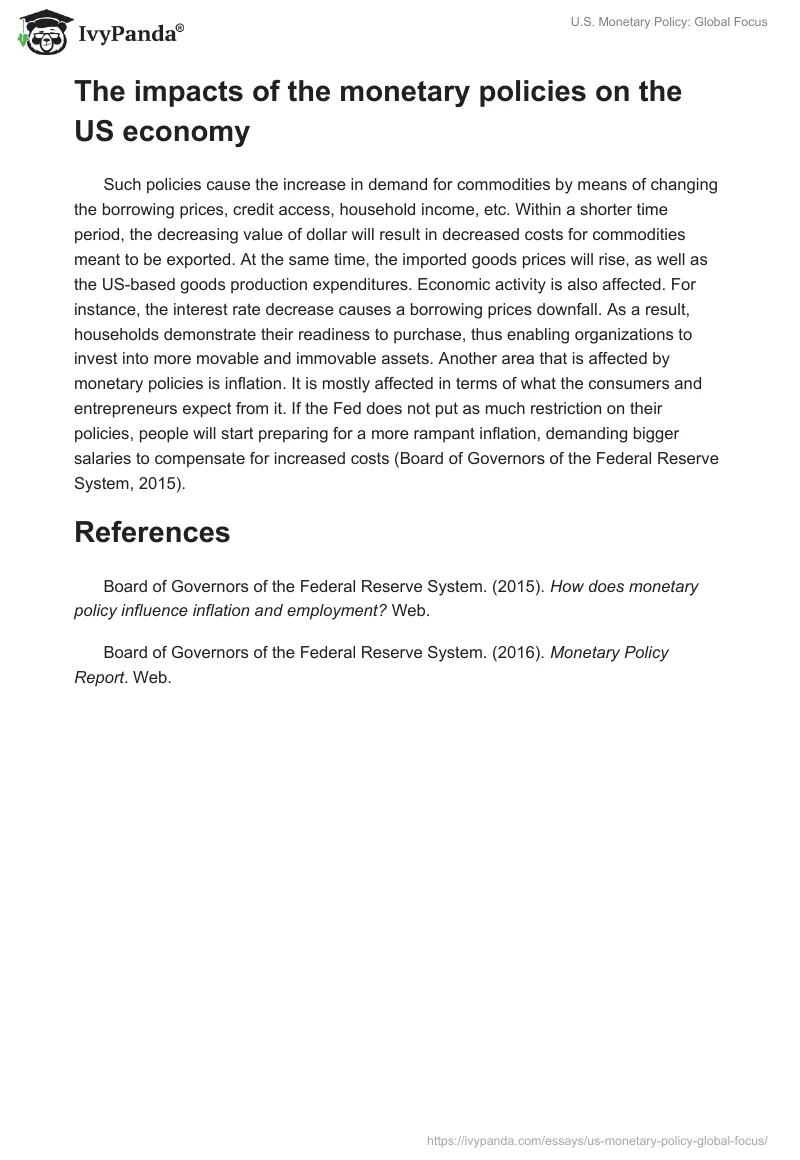US monetary policy since 2009
The monetary supply in the US has been experiencing a considerable expansion since 2009, following the 2008 Crisis. Despite the fact that the supply is high, inflation is going on in a peaceful fashion. The reason to it are considerable cuts in lending; instead, the funds are being used to buy the government debts, with housing credits still quite hard to obtain (Board of Governors of the Federal Reserve System, 2016). What can be seen is the lack of serious inflation rates both de facto and as expected.
But, albeit the growth of incomes per household, the interest rates remained low and stay there up to the present day. The Fed has been trying to persuade the credit market to take precautions and time to decide when – and whether – to raise rates. Such solution is largely predetermined by the inflation – the prospect of it, to be more exact.
The recent directions of the US monetary policy
The Fed has not yet started the rate increase due to the uncertainty about the inflation levels and the speed of its possible escalation. Due to dollar stabilization, energy and imported goods prices, as well as other commodity prices, have not inflated significantly as the demand on such products fell (Board of Governors of the Federal Reserve System, 2016). It is also estimated that the prices will not rampage in the nearest future; as a consequence, the inflation rates are unlikely to display rampage that is in any sense significant. It is stated in the report that the Fed will do their best to assess the energy prices that might serve as an indicator of underlying inflation. For that sake, dollar and energy costs have to be adjusted. It is also stated that the Fed’s monetary policies will be mainly based on the data that will be possible to retrieve (Board of Governors of the Federal Reserve System, 2016).
The impacts of the monetary policies on the US economy
Such policies cause the increase in demand for commodities by means of changing the borrowing prices, credit access, household income, etc. Within a shorter time period, the decreasing value of dollar will result in decreased costs for commodities meant to be exported. At the same time, the imported goods prices will rise, as well as the US-based goods production expenditures. Economic activity is also affected. For instance, the interest rate decrease causes a borrowing prices downfall. As a result, households demonstrate their readiness to purchase, thus enabling organizations to invest into more movable and immovable assets. Another area that is affected by monetary policies is inflation. It is mostly affected in terms of what the consumers and entrepreneurs expect from it. If the Fed does not put as much restriction on their policies, people will start preparing for a more rampant inflation, demanding bigger salaries to compensate for increased costs (Board of Governors of the Federal Reserve System, 2015).
References
Board of Governors of the Federal Reserve System. (2015). How does monetary policy influence inflation and employment? Web.
Board of Governors of the Federal Reserve System. (2016). Monetary Policy Report. Web.


